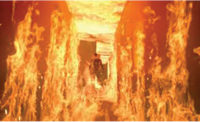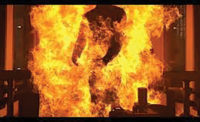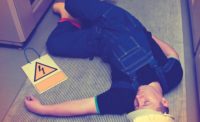Four factors determine the severity of an arc flash injury: 1) Proximity of the worker to the hazard; 2) Temperature; 3) Time for the circuit to break; and 4) Strength of the current passing through the arc.
The National Fire Protection Association (NFPA) has identified various FR hazardous risk category levels, which are numbered by severity from 1 to 4. The chart, based on specific job tasks, ranges from HRC 1 (which is low risk and allows for 100% treated cotton), up to HRC 4 (which is high risk and requires FR clothing with a minimum arc rating of 40).
Two methods to select PPE
Selection of appropriate PPE, given a certain task to be performed, is normally handled in one of two possible ways. The first method is to consult a hazard category classification table, like that found in NFPA 70E.
The ARC rating determines the protective characteristics of the fabric. The higher the ARC rating value, the greater the protection. When PPE is sold to protect workers from arcing faults, clothing manufacturers are required to indicate the ARC rating.
The second method is to perform an arc flash hazard calculation to determine the available incident arc energy. Once the incident energy is calculated, the appropriate ensemble of PPE that offers protection greater than the energy available can be selected.
Under NFPA 2113, a hazard assessment must be conducted that will deliver a quantified energy level for the various tasks that workers perform. To properly conduct a hazard assessment, the following are critical questions to be answered:
• What materials are burning? Or What is your fuel source?
• How much air is available to mix with the fuel to support combustion?
• How long will it take for a person to identify they are in trouble and do something about it?
• Are workers wearing gear that would slow them down?
A Hazard/Risk Assessment and the resulting HR is the value of the energy necessary to pass through any given fabric to cause with 50% probability a second or third degree burn. This value is measured in calories/cm².
Hugh Hoagland, founder of ArcWear, reports, “In 2012, NFPA 70E changed the terminology referencing personal protective equipment (PPE); what was formerly referred to as FR (flame resistant) clothing is to be called Arc Rated or AR, according to the standard change. The difference between the two and the reason for the change lies in the fact that all clothing with an arc rating (AR) is flame resistant (FR), but not all FR clothing has an arc rating. FR doesn’t have any standards applying to any particular hazard. FR traditionally was believed to be generically protective from flame at some level, but this is actually untrue of some fabrics. AR indicates a garment has an arc rating and the level of protection has been determined through testing.”
For more info, visit www.nfpa.org.




